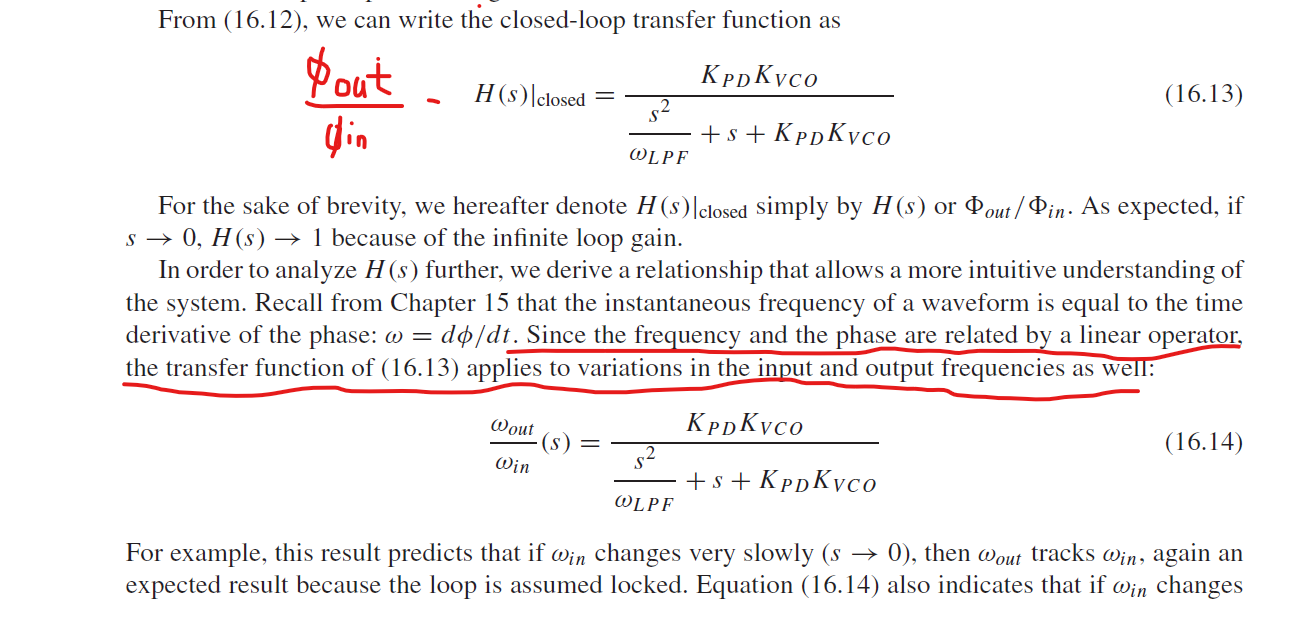[Design of Analog CMOS inteagrtaed circuits by Razavi]
Can someone explain what Lapalce transform rules states that this is possible? They have a function of excess output phase / excess input phase in s-domain and they say that this can be extended to w_out/w_in since the derivative is a linear operator? How?

